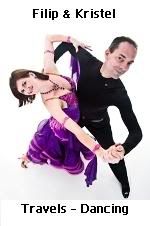The Qenko Inca site is in fact a holy place, a Wak'a. From the outside it looks like a rocky hill but once you explore it further, you see entrances and corridors between the rocks. We followed our guide through this small maze and came to a stone carved altar.
The altar was used for several activities. The most occurring was sacrificing animals to please the Gods and request prosperity for the Inca community living here. When the living circumstances were difficult, they had to make more offers so that their situation could improve. The altar was also used to mummify the most prominent deceased members of the Inca community.
Did the Inca's also sacrifice humans? Yes, they did but not at Qenko. Humans were not sacrificed like animals on an altar. Our guide explained it was extremely rare and only children prepared for this task were used. From when they were born, some children were selected for this mission. They knew this would happen and they were prepared for it. At the age of about ten, they were taken to a very high altitude, were given some medication to sleep and because of the height and cold, a painless death followed. The bodies were mummified and buried at tempels.
De Qenko Inka tempel is een heilige plaats of Wak'a. Op het eerste zicht lijkt dit een grote rots maar als je het wat beter bestudeerd, zie je openingen en een gangenstelsel. we volgden onze gids in dit kleine doolhof tot aan een stenen altaar.
Het altaar werd gebruikt voor twee verschillende rituelen. Het meest voorkomende was het offeren van dieren ter ere van de Goden. Hiermee vroeg de Inka gemeenschap meer voorspoed en geluk. Hoe slechter de levenskwaliteit hoe meer offers er werden gebracht om de toestand te verbeteren.Het altaar werd ook gebruikt voor het mummificatie proces van vooraanstaande leden uit de Inka gemeenschap.
Werden er ook mensen geofferd? Ja, maar niet hier op Qenko. Mensen werden niet geofferd zoals dieren op een altaar. Onze gids vertelde dat slechts in zeer slechte omstandigheden kinderen werden geofferd. Vanaf de geboorte werden kinderen voor deze taak geselecteerd en voorbereid. Rond de leeftijd van tien jaar wordt het kind naar heel grote hoogte gebracht, krijgt medicatie om te slapen en door de hoogte en koude, sterft het een pijnloze dood. Daarna wordt het lichaam gemummificeerd en begraven aan de tempel.
Previous Cusco article:
General Impressions of Cusco, the old capital of the Inca’s
Previous Temple article:
Spanish Qorinchanka Monastery with hidden Inca ruins, Cusco
Return to main page
Waar het om gaat.
1 hour ago

























A really wonderful place, high above with a fabulous view around. Marvelous impressions of your walk.
ReplyDeleteBest regards, Synnöve
mooie foto's bij je bericht Filip. Kind-offers kunnen wij ons uit zicht van Europa niet voorstellen en vinden het verschrikkelijk, maar hun geloof liet dit offer anders voelen. Toch moet het voor de betreffende ouders een heel zwaar offer geweest zijn. Groetjes Dietmut
ReplyDeleteHow awful! I don't know how people can live with a God who requires sacrifices, and in such a beautiful area, as well.
ReplyDeleteit wasn't so uncommon back in those days. Many religions had it at least somewhat except maybe not humans but certainly livestock. It's also in the Old Testament.
Deletegreat view of the old inca site
ReplyDeletegreat view. I would feel kinda phobic walking between the massive rocks
ReplyDeleteIndrukwekkend om te zien Filip, een goed stuk informatie en mooie foto's.
ReplyDeleteMachtig om te zien en goede informatie erbij. Mooi stukje geschiedenis.
ReplyDeleteLovely view from the hills to below.
ReplyDeleteSpectacular views!!!
ReplyDeletewhaw prachtig daar! mooie foto's
ReplyDeleteOh my goodness what great pictures! You both take the best trips of anyone I know! Such amazing places to see!
ReplyDelete